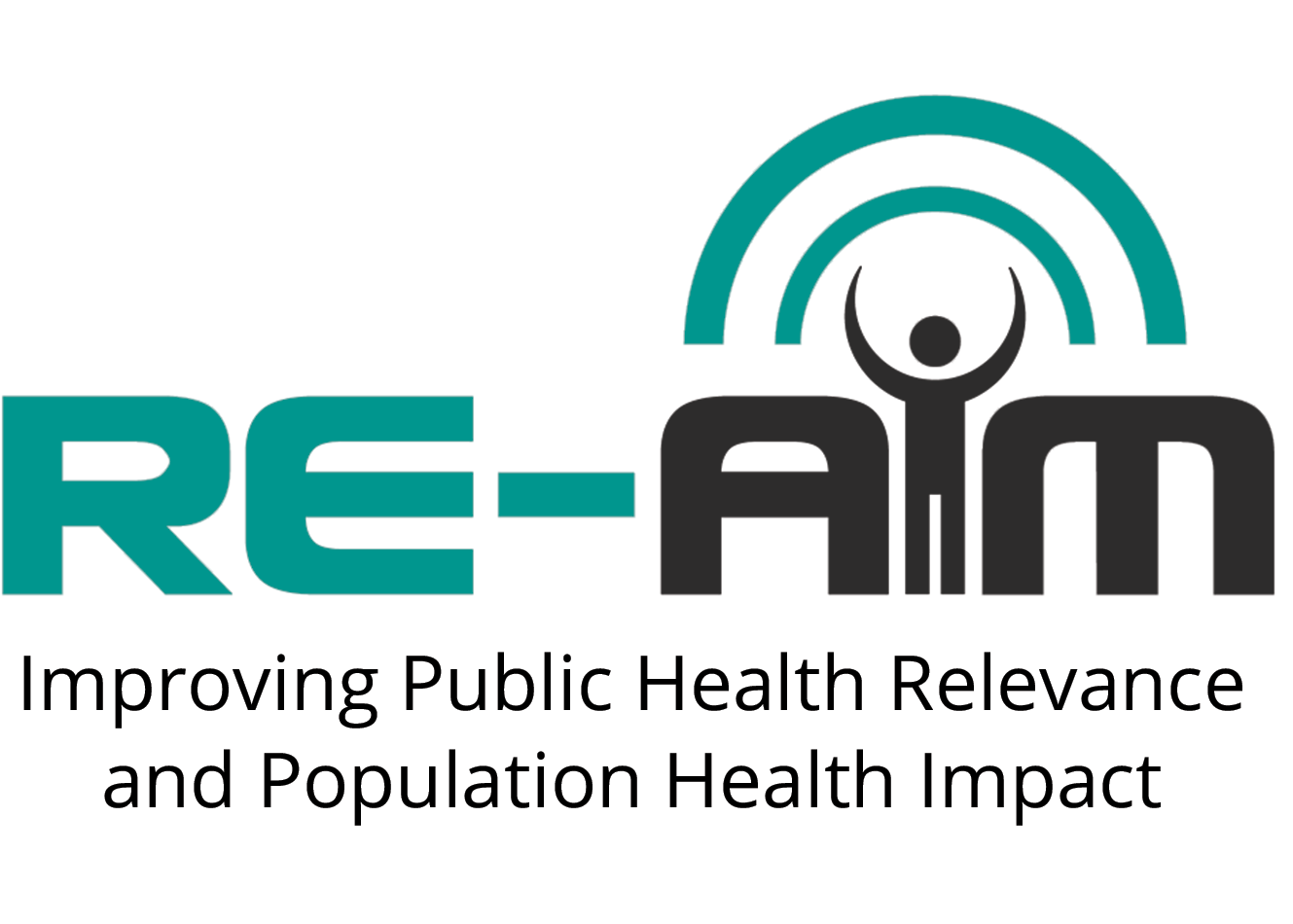What is RE-AIM?
The goal of RE-AIM is to encourage program planners, evaluators, readers of journal articles, funders, and policy-makers to pay more attention to essential program elements including external validity that can improve the sustainable adoption and implementation of effective, generalizable, evidence-based interventions.
The five steps to translate research into action are:
- Reach the target population
- Effectiveness or efficacy
- Adoption by target staff, settings, systems and communities
- Implementation consistency, costs and adaptions made during delivery
- Maintenance/sustainment of intervention effects in individuals and settings over time
Reach – The absolute number, proportion, and representativeness of individuals who are willing to participate in a given initiative, intervention, or program.
Effectiveness (or Efficacy) – The impact of an intervention on important outcomes, including potential negative effects, quality of life, and economic outcomes.
Adoption – The absolute number, proportion, and representativeness of settings and intervention agents (people who deliver the program) who are willing to initiate a program.
Implementation – At the setting level, implementation refers to the intervention agents’ fidelity to the various elements of an intervention’s protocol, including consistency of delivery as intended and the time and cost of the intervention. At the individual level, implementation refers to clients’ use of the intervention strategies.
Maintenance – The extent to which a program or policy becomes institutionalized or part of the routine organizational practices and policies. Within the RE-AIM framework, maintenance also applies at the individual level. At the individual level, maintenance has been defined as the long-term effects of a program on outcomes after 6 or more months after the most recent intervention contact.
How has RE-AIM been developed and used?
RE-AIM was originally developed as a framework for consistent reporting of research results and later used to organize reviews of the existing literature on health promotion and disease management in different settings. The acronym stands for Reach, Effectiveness, Adoption, Implementation, and Maintenance which together determine public health impact. Since the original paper in 1999, there have been approximately 700 publications on RE-AIM by a variety of authors in fields as diverse as aging, cancer screening, dietary change, physical activity, medication adherence, health policy, environmental change, chronic illness self-management, well-child care, eHealth, worksite health promotion, women’s health, smoking cessation, quality improvement, weight loss, diabetes prevention, and practice-based research.
More recently, RE-AIM has been used to translate research into practice and to help plan programs and improve their chances of working in “real-world” settings. The framework has also been used to understand the relative strengths and weaknesses of different approaches to health promotion and chronic disease self-management-such as in-person counseling, group education classes, telephone counseling, and internet resources. The overall goal of the RE-AIM framework is to encourage program planners, evaluators, readers of journal articles, funders, and policy-makers to pay more attention to essential program elements including external validity that can improve the sustainable adoption and implementation of effective, generalizable, evidence-based interventions.
See Why use RE-AIM for answers to some basic questions. You’ll also find ideas to improve your chances at having a positive impact on public health. For information using RE-AIM in combination with PRISM see our What is PRISM.
